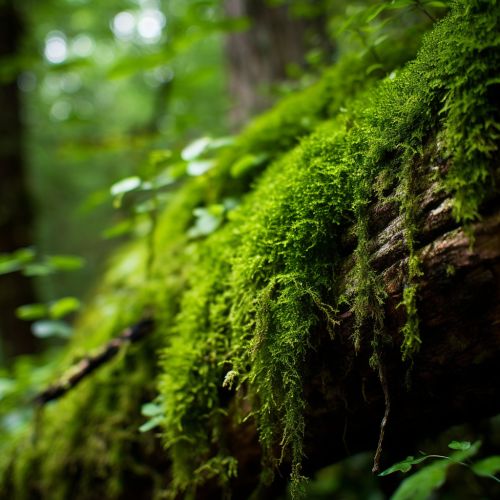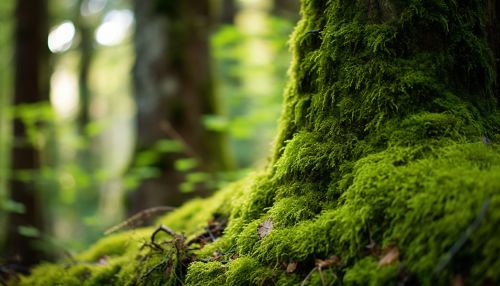Mosses
Introduction
Mosses are small, non-vascular plants that typically form dense green clumps or mats, often in damp or shady locations. They belong to the division Bryophyta, which comprises around 12,000 species. Unlike most higher plants, mosses do not have water-bearing xylem tissues or cuticles. They rely on their surrounding environment for moisture and nutrients.


Biology and Life Cycle
Mosses reproduce using spores, not seeds, and have a unique two-stage life cycle. The first stage, known as the gametophyte stage, is the most visible and familiar. During this stage, the moss plants produce sex cells or gametes. The male gametes are produced in antheridia and the female gametes in archegonia.
When conditions are right, usually when moisture is abundant, the male gametes are released and swim to the archegonia. Here, fertilization occurs, leading to the formation of a zygote. This zygote then develops into a sporophyte, marking the beginning of the second stage of the moss life cycle.
The sporophyte grows out of the female gametophyte, drawing nutrients from it. It consists of a stalk, or seta, and a spore capsule, or sporangium. When the sporangium matures, it releases spores, which can grow into new gametophytes, completing the life cycle.
Classification and Diversity
Mosses are classified into three classes: Bryopsida, Sphagnopsida, and Andreaeopsida. The Bryopsida is the largest class, with over 95% of moss species. These mosses typically have a more complex structure and life cycle compared to the other classes.
Sphagnopsida, also known as peat mosses, are important in the formation of peat bogs. They have a unique structure that allows them to hold large amounts of water, making them crucial in the regulation of the water cycle in certain ecosystems.
Andreaeopsida, or rock mosses, are a small group of mosses that typically grow on rocks, especially in areas of high atmospheric pollution. They are known for their ability to tolerate extreme conditions.
Ecology and Distribution
Mosses are found all over the world, from the Arctic to the Antarctic, in a variety of habitats. They play a crucial role in the ecosystem, contributing to soil formation and providing habitat for numerous small animals and microorganisms.
In forest ecosystems, mosses are often found growing on the bark of trees (epiphytic mosses) or on the forest floor (terrestrial mosses). They help in maintaining the moisture balance and contribute to the nutrient cycling in these ecosystems.
In tundra and polar regions, mosses form a significant part of the vegetation and play a key role in the survival of these fragile ecosystems. They provide insulation, reducing soil freezing and helping to maintain permafrost.
Economic and Cultural Significance
Mosses have been used by humans for various purposes throughout history. Sphagnum mosses, for instance, have been used for fuel and as a soil conditioner. They were also used as dressing for wounds during World War I due to their antiseptic properties.
In Japan, mosses are highly valued in the art of gardening. The ancient art of moss gardening, or kokedama, is still practiced today. Mosses are also used in the creation of bonsai, contributing to the aesthetic appeal of these miniature trees.
In the scientific community, mosses are used as bioindicators to monitor air quality. Their ability to absorb pollutants from the atmosphere makes them an effective tool for environmental monitoring.
